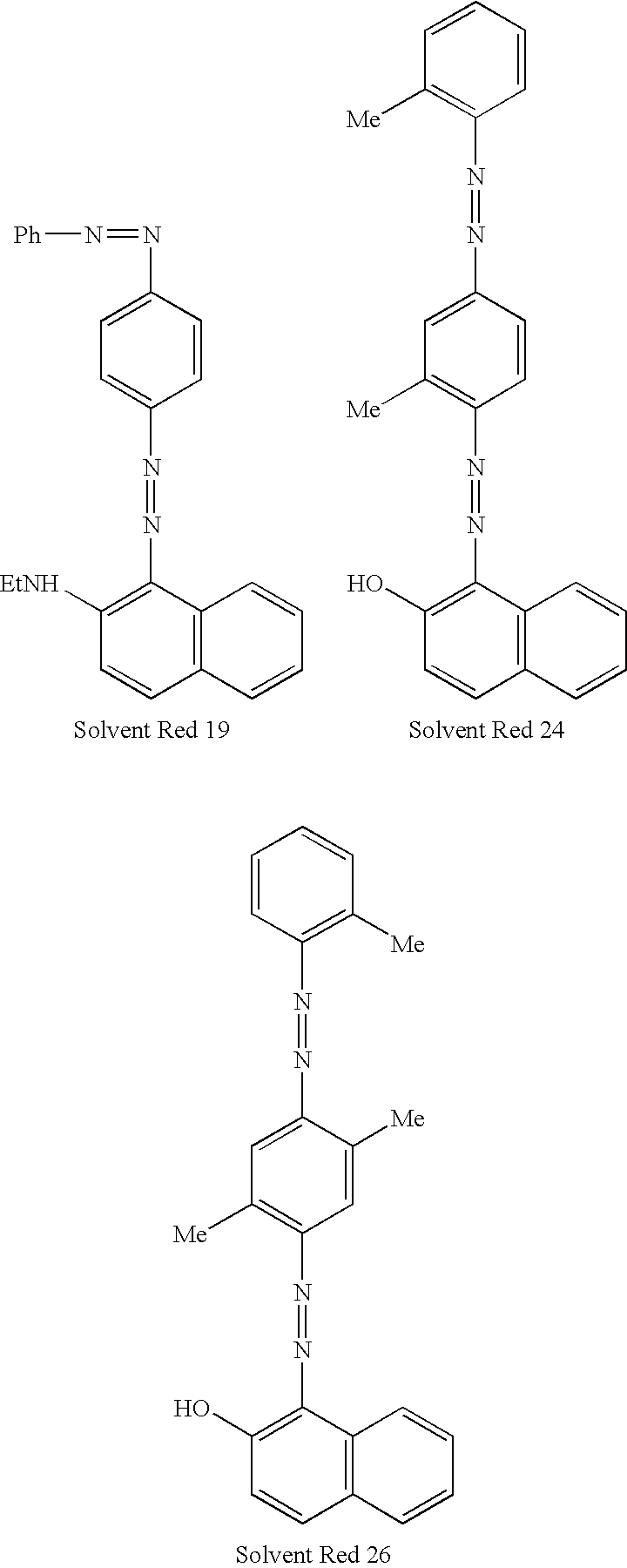Laser coloration of coated substrates
a coating material and laser technology, applied in the field of record materials, can solve problems such as unsuitability as water-based paper coating materials
- Summary
- Abstract
- Description
- Claims
- Application Information
AI Technical Summary
Benefits of technology
Problems solved by technology
Method used
Image
Examples
example 1
[0030]Solvent Green 5 (0.70 g), water (40.20 g) and EMEREST 2660 dispersant (1.00 g), a PEG 600 monooleate from Cognis Corporation, are blended for 10 minutes in a Waring blender to break the dye down to the desired particle size of less than 100 μm. Airflex RB8 emulsion binder (9.94 g), a vinyl acetate copolymer emulsion from Air Products and Chemicals, Inc., is then added to the blend and mixed thoroughly to form the coating. The coating is applied to a paper substrate using a size 5 Meyer rod. The coated paper, which at this stage is white in color, is then mounted on a table under a CO2 laser head directly in the path of the laser beam. The laser system is connected to a computer equipped with software that allows one to create any desired graphics and transfer the graphics to the substrate at the touch of a button. A laser marking intensity of 20% is employed to activate the dye. In this example, the desired graphic pattern shows on the substrate in a fluorescent yellow color.
example 2
[0031]Solvent Blue 14 (0.07 g), water (41.4 g), titanium dioxide (3.0 g), and PEG 900 monostearate dispersant (1.4 g) are blended in a Waring blender for five minutes. An acrylic emulsion binder (95.3 g) is then added to the blend and mixed thoroughly. The final blend is applied to a paper substrate using a size 3 Meyer rod. A laser marking intensity of 35% is employed to activate the dye. The transferred graphics show on the substrate in a blue color following interaction of the coating with the laser beam.
example 3
[0032]Solvent Red 27 (0.07 g), water (40.26 g), and starch binder (3.0 g) were blended as described in the examples above. A polyvinyl alcohol emulsion (76.7 g) is added to the mix and the final blend is used to coat a polyethylene film substrate, being applied with a size 0 Meyer rod. On treatment with a laser beam (15% intensity), the transferred graphics show up in red on the coated PE film.
PUM
| Property | Measurement | Unit |
|---|---|---|
| diameter | aaaaa | aaaaa |
| particle size | aaaaa | aaaaa |
| particle size | aaaaa | aaaaa |
Abstract
Description
Claims
Application Information
 Login to View More
Login to View More - R&D
- Intellectual Property
- Life Sciences
- Materials
- Tech Scout
- Unparalleled Data Quality
- Higher Quality Content
- 60% Fewer Hallucinations
Browse by: Latest US Patents, China's latest patents, Technical Efficacy Thesaurus, Application Domain, Technology Topic, Popular Technical Reports.
© 2025 PatSnap. All rights reserved.Legal|Privacy policy|Modern Slavery Act Transparency Statement|Sitemap|About US| Contact US: help@patsnap.com



